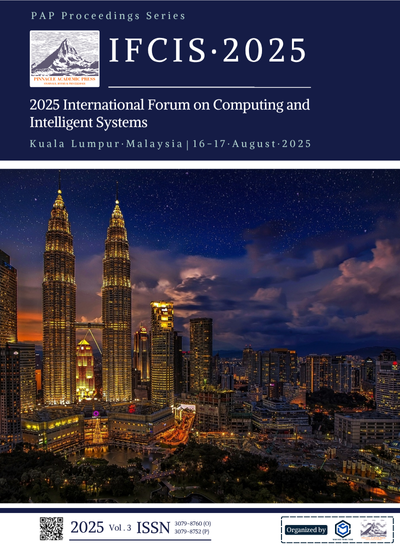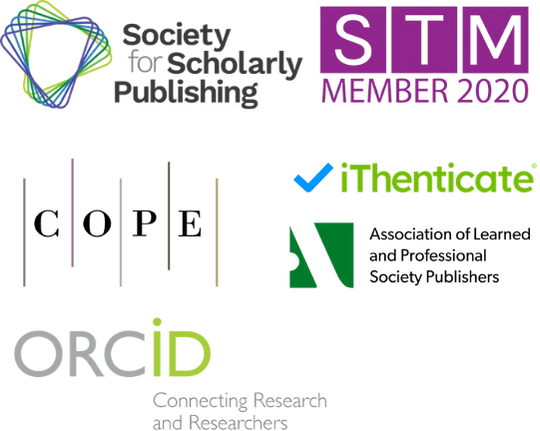Predicting Participation Behavior in Online Collaborative Learning through Large Language Model-Based Text Analysis
Keywords:
collaborative learning, behavior prediction, large language models, text analysisAbstract
Online collaborative learning environments generate vast amounts of textual data that contain rich behavioral patterns essential for understanding and predicting learner engagement. This research presents a comprehensive framework for predicting participation behavior in collaborative learning platforms through advanced large language model-based text analysis. Our methodology integrates sophisticated feature extraction techniques that leverage transformer-based architectures with multi-modal data fusion approaches to capture temporal behavioral dynamics. The framework employs hierarchical attention networks for behavior classification, enabling real-time identification of engagement patterns including active participation, passive engagement, collaborative leadership, and at-risk withdrawal behaviors. Experimental validation across diverse educational contexts demonstrates significant performance improvements, achieving 88.7% prediction accuracy with 156ms processing latency. The system successfully processes heterogeneous textual data from discussion forums, peer reviews, and collaborative projects across 13,267 learners from multiple institutional settings. Temporal pattern analysis reveals consistent behavioral transition patterns that enable proactive intervention strategies, with intervention success rates reaching 83.4% for collaborative conflict scenarios. The research contributes novel methodological advances in educational behavior prediction through the integration of large language models with collaborative learning analytics. The findings provide actionable insights for educational practitioners and platform designers, enabling the development of adaptive learning environments that respond dynamically to predicted behavioral changes. The framework's cross-domain generalization capabilities demonstrate practical applicability across diverse educational contexts, supporting the development of intelligent educational technologies that enhance collaborative learning outcomes through predictive behavioral analytics.
References
1. S. Zhang, C. Zhu, and J. Xin, "CloudScale: A lightweight AI framework for predictive supply chain risk management in small and medium manufacturing enterprises," Spectrum Res., vol. 4, no. 2, 2024.
2. S. Zhang, T. Mo, Z. Zhang, "LightPersML: A lightweight machine learning pipeline architecture for real-time personalization in resource-constrained e-commerce businesses," J. Adv. Comput. Syst., vol. 4, no. 8, pp. 44–56, 2024, doi: 10.69987/JACS.2024.40807.
3. Y. Chen, C. Ni, H. Wang, "AdaptiveGenBackend: A scalable architecture for low-latency generative AI video processing in content creation platforms," Ann. Appl. Sci., vol. 5, no. 1, 2024.
4. C. Ju et al., "AI-driven vulnerability assessment and early warning mechanism for semiconductor supply chain resilience," Ann. Appl. Sci., vol. 5, no. 1, 2024.
5. M. Li, W. Liu, C. Chen, "Adaptive financial literacy enhancement through cloud-based AI content delivery: Effectiveness and engagement metrics," Ann. Appl. Sci., vol. 5, no. 1, 2024.
6. Z. Wu et al., "Adaptive traffic signal timing optimization using deep reinforcement learning in urban networks," Artif. Intell. Mach. Learn. Rev., vol. 5, no. 4, pp. 55–68, 2024, doi: 10.69987/AIMLR.2024.50405.
7. J. Chen, Z. Lv, "Graph neural networks for critical path prediction and optimization in high-performance ASIC design: A ML-driven physical implementation approach," Glob. Conf. Adv. Sci. Technol., vol. 1, no. 1, 2025.
8. Y. Zhao et al., "Unit operation combination and flow distribution scheme of water pump station system based on genetic algorithm," Appl. Sci., vol. 13, no. 21, art. no. 11869, 2023, doi: 10.3390/app132111869.
9. A. Kang, J. Xin, X. Ma, "Anomalous cross-border capital flow patterns and their implications for national economic security: An empirical analysis," J. Adv. Comput. Syst., vol. 4, no. 5, pp. 42–54, 2024, doi: 10.69987/JACS.2024.40504.
10. W. Bi, T. K. Trinh, S. Fan, "Machine learning-based pattern recognition for anti-money laundering in banking systems," J. Adv. Comput. Syst., vol. 4, no. 11, pp. 30–41, 2024, doi: 10.69987/JACS.2024.41103.
11. H. Wang et al., "Distributed batch processing architecture for cross-platform abuse detection at scale," Pinnacle Acad. Press Proc. Ser., vol. 2, pp. 12–27, 2025.
12. C. Ni et al., "Contrastive time-series visualization techniques for enhancing AI model interpretability in financial risk assess-ment," 2025, doi: 10.20944/preprints202504.1984.v1.
13. G. Rao, Z. Wang, J. Liang, "Reinforcement learning for pattern recognition in cross-border financial transaction anomalies: A behavioral economics approach to AML," Appl. Comput. Eng., vol. 142, pp. 116–127, 2025. ISBN: 9781835589991.
14. J. Liang et al., "Anomaly detection in tax filing documents using natural language processing techniques," Appl. Comput. Eng., vol. 144, pp. 80–89, 2025. ISBN: 9781805900214.
15. J. Wang, L. Guo, K. Qian, "LSTM-based heart rate dynamics prediction during aerobic exercise for elderly adults," 2025, doi: 10.20944/preprints202504.1692.v1.
16. D. Ma, M. Shu, H. Zhang, "Feature selection optimization for employee retention prediction: A machine learning approach for human resource management," 2025, doi: 10.20944/preprints202504.1549.v1.
17. M. Li, D. Ma, Y. Zhang, "Improving database anomaly detection efficiency through sample difficulty estimation," 2025, doi: 10.20944/preprints202504.1527.v1.
18. K. Yu et al., "Real-time detection of anomalous trading patterns in financial markets using generative adversarial networks," 2025, doi: 10.20944/preprints202504.1591.v1.
19. B. Dong, T. K. Trinh, "Real-time early warning of trading behavior anomalies in financial markets: An AI-driven approach," J. Econ. Theory Bus. Manag., vol. 2, no. 2, pp. 14–23, 2025, doi: 10.70393/6a6574626d.323838.
20. H. McNichols, M. Zhang, A. Lan, "Algebra error classification with large language models," in Proc. Int. Conf. Artif. Intell. Educ., Cham, Springer, 2023, pp. 1–12, doi: 10.1007/978-3-031-36272-9_30.
21. M. Zhang, N. Heffernan, A. Lan, "Modeling and analyzing scorer preferences in short-answer math questions," arXiv preprint arXiv:2306.00791, 2023.
22. G. Rao et al., "Jump prediction in systemically important financial institutions' CDS prices," Spectrum Res., vol. 4, no. 2, 2024.
23. J. Fan, T. K. Trinh, H. Zhang, "Deep learning-based transfer pricing anomaly detection and risk alert system for pharmaceutical companies: A data security-oriented approach," J. Adv. Comput. Syst., vol. 4, no. 2, pp. 1–14, 2024, doi: 10.69987/JACS.2024.40201.
24. M. Zhang et al., "Automatic short math answer grading via in-context meta-learning," arXiv preprint arXiv:2205.15219, 2022.
25. T. K. Trinh, D. Zhang, "Algorithmic fairness in financial decision-making: Detection and mitigation of bias in credit scoring applications," J. Adv. Comput. Syst., vol. 4, no. 2, pp. 36–49, 2024, doi: 10.69987/JACS.2024.40204.
26. Z. Wang et al., "Scientific formula retrieval via tree embeddings," in Proc. IEEE Int. Conf. Big Data, 2021, pp. 1–10, doi: 10.1109/BigData52589.2021.9671942.
27. M. Zhang et al., "Math operation embeddings for open-ended solution analysis and feedback," arXiv preprint arXiv:2104.12047, 2021.
28. Z. Wang, X. Wang, H. Wang, "Temporal graph neural networks for money laundering detection in cross-border transactions," Acad. Nexus J., vol. 3, no. 2, 2024.
29. D. Qi et al., "Anomaly explanation using metadata," in Proc. IEEE Winter Conf. Appl. Comput. Vision, 2018, doi: 10.1109/WACV.2018.00212.
30. M. Zhang, T. Mathew, B. Juba, "An improved algorithm for learning to perform exception-tolerant abduction," in Proc. AAAI Conf. Artif. Intell., vol. 31, no. 1, 2017, pp. 1–8, doi: 10.1609/aaai.v31i1.10700.
31. Z. Wang, X. Wang, H. Wang, "Temporal evolution of sentiment in earnings calls and its relationship with financial perfor-mance," Appl. Comput. Eng., vol. 141, pp. 195–206, 2025. ISBN: 9781835589977.
32. S. Zhang, Z. Feng, B. Dong, "LAMDA: Low-latency anomaly detection architecture for real-time cross-market financial decision support," Acad. Nexus J., vol. 3, no. 2, 2024.
33. T. K. Trinh, Z. Wang, "Dynamic graph neural networks for multi-level financial fraud detection: A temporal-structural ap-proach," Ann. Appl. Sci., vol. 5, no. 1, 2024.
Downloads
Published
Issue
Section
License
Copyright (c) 2025 Tianjun Mo, Zihan Li, Lingfeng Guo (Author)

This work is licensed under a Creative Commons Attribution 4.0 International License.



